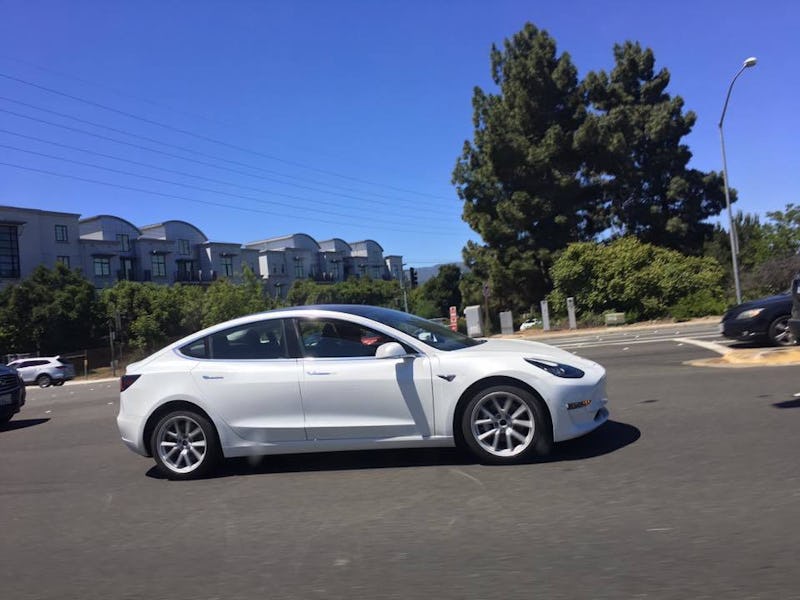New photos of Tesla’s upcoming Model 3 have surfaced online that highlight the vehicle’s groundbreaking aerodynamic design, thanks to the striking white color. The $35,000 electric car, set to enter production this July, will feature a smaller battery than the company’s other cars. To achieve a competitive range on a single charge, Tesla is employing a number of techniques to improve efficiency.
On Sunday, a Reddit user uploaded an image to the Tesla subreddit of a pre-release Model 3 in Palo Alto, a few minutes’ drive from the company’s headquarters. In the comments section, another user uploaded two more photos.
Since the car entered the release candidate phase in March, numerous public sightings have been reported around the state of California. But most of these cars have been either blue or black — these photos of the white model highlight some of the design choices easily overlooked in the darker colors, like the lip running across the sides on the doors.
A white Model 3 out on the streets. Note the lip running across the doors.
These design choices serve a useful purpose. The battery is one of the most expensive components of an electric car, and Tesla has set itself an ambitious goal with the Model 3 to reach a far lower price point than its other vehicles. The Model S, the company’s current cheapest car, starts at $68,000 for a car with a 70kWh battery and a range of 240 miles per charge as measured by the EPA. We don’t know yet how big the battery in the entry-level Model 3 will be, but CEO Elon Musk has confirmed that it will be smaller than 60 kWh. Despite the smaller battery, the car will still achieve a respectable range of 215 miles.
The white Model 3 in action.
Tesla is making a number of moves to maintain a high range while sacrificing battery capacity, including a focus on aerodynamic design. During development, Musk said the company was aiming for a drag coefficient of 0.21. This number measures how much resistance the car faces from the air, so the lower the better. By comparison, the Model S has a drag coefficient of 0.24, while the Nissan Leaf has a 0.32 coefficient.
The white Model 3 in Palo Alto.
Tesla used Exa digital simulation tools to help create an aerodynamic design. The company’s vice president of ground transportation applications, Ales Alajbegovic, told Electrek in an interview that Tesla increased the Model S’ range by 50 miles through reducing the coefficient down from 0.32. With this in mind, it’s easy to see why Tesla would focus on aerodynamics for the price-conscious Model 3.
“The Model 3 also employs air curtains in the lower fender that exit ahead of the front tires to provide a drag-reducing air stream over the wheels, while helping the flow transition smoothly around the sides of the vehicle,” Alajbegovic said.
It might look like it has some slightly odd design choices, but the Model 3’s bodywork has been shaped to achieve a high battery range at a low cost. Only public testing out in the real world will reveal whether the company has done enough to achieve this goal.
